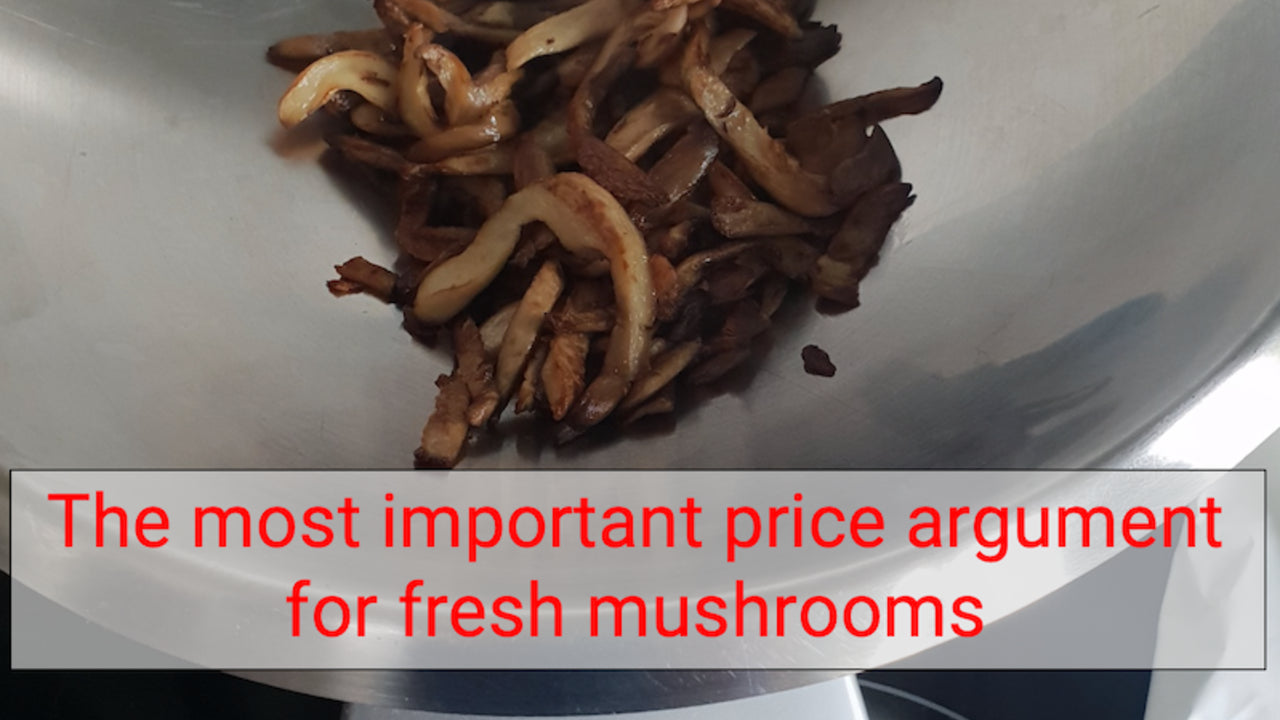We have been playing with the thought of doing a blog about this topic for a long time and we have been postponing it. Until today. The idea first came to mind when my co-founder Mark Slegers mentioned a peculiar "behaviour" of mushrooms, while they are longer on the shelves.
As a biotechnologist, he is familiar with the behaviour of cell walls. My background is in financial services, so the stuff was new to me. I decided right there, that I wanted to do an experiment on this. But when, I didn't know. As time went by, I never found the right moment to do the test.
Then an urban mushroom farmer who is farming in a nearby city, send me some pictures. He asked me if I knew about this phenomenon about how fresh mushroom compare to those on the shelves of the average supermarket. To my surprise, he did the test! :-)
I still want to replicate it for myself but I have decided that I wanted to share this with you and not procrastinate any longer. So the information I'm about to share is not replicated or tested by ourself, but as I have received this information from two trusted sources, I'm putting it out there.
Oké, Siemen, oké, enough with the introduction. What the @#$% are you talking about?
I am talking about the most important price argument for fresh mushrooms.
Mushrooms age after harvesting. As a result, their cell walls will become weaker. When you cook an older mushroom with a weak cell wall, the cell wall tends to break and the content of the cell leaks out. This has a significant effect on the amount of material you are left with after preparing.
That means that when you prepare fresh mushrooms, there will be more material remaining after it's prepared than when you prepare older mushrooms. When you start a mushroom farm, this is important to know. Because if you are a producer of mushrooms and you deliver straight to the end user, for example to restaurants, this is a very important argument for a higher price.
So what did our colleague do?
He took 140 gram of oyster mushrooms, 1 tbsp oil, induction position 8 and then het baked the mushrooms for 10 minutes. The results where astonishing. Let me show you.
First the results of his own fresh mushrooms. 
After cooking the 140 gram of oyster mushrooms for 10 minutes, 83 gram remained. A 41% reduction of material.
Let's see how the competition performs.

The supermarkets have a significant lower performance. You are left with respectively 66, 64 and 59 grams. A reduction of 53, 54 en 58%. So this shows that the fresher the mushroom, the more material you are left with. Let's put these results in Excel.

This test shows [according to us] that fresh mushroom give the customer between 20% and 29% more material after cooking. So they need fewer mushrooms, to get the same result on the plate. Even when your mushrooms are 15% more expensive then the competition, your client can still be 5% better off.
Have you ever looked at it this way? What do you think of this way of reasoning? Let us know in the comments below.
A special thanks to Erik Boele - de Zeeuw from the "Oesterzwammerij" for sharing the images.
Are you considering to start an urban mushroom farm or do you have a project but are you struggling to get your businessmodel working? Then check our Mushroom Master Program. We have trained more than 40 entrepreneurs to start a successful mushroom farm.
